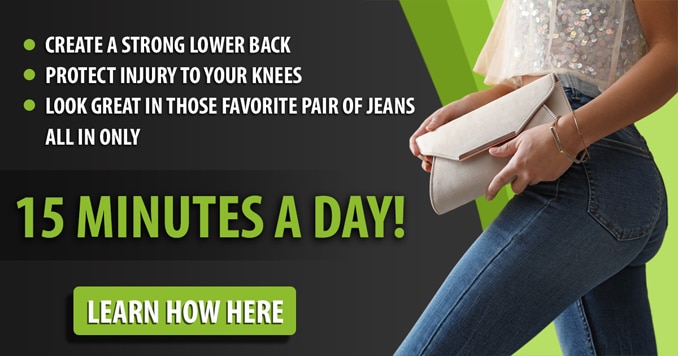Your glutes aren’t just about looks — they’re the powerhouse of your body. Glute weakness is especially common in women [1] and people in midlife. Weak glutes can cause back pain, sore hips, knee trouble, and even ankle issues. But when you “wake them up,” everything changes.
Strong glutes lead to better balance, increased power, and reduced injuries. They help you run faster, jump higher, and move without pain.
You only need a few simple activation moves to fire them up. Add them to your warm-up and feel stronger, safer, and unstoppable in every workout.
1. Glute Bridge
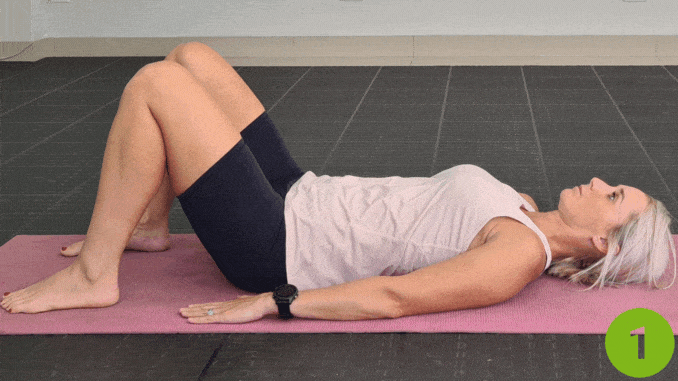
- Lie on your back on the floor with your knees bent and feet flat on the floor.
- Keep your arms at your sides or raise them toward the ceiling for balance.
- Contract your core and press through your heels to lift your hips towards the ceiling, forming a straight line from your knees to your shoulders.
- Hold the position briefly, then slowly lower your hips back to the starting position.
2. Clamshells
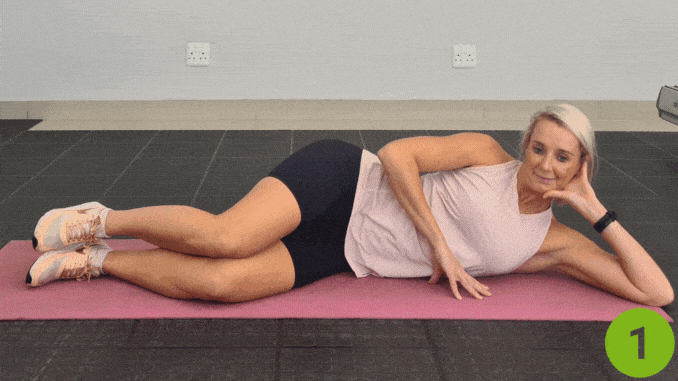
- Lie on your side with your arm bent, supporting your head.
- Bend your knees with your ankles in line with your hips.
- Tighten your core.
- Lift your top knee towards the ceiling while keeping your feet together.
- Lower your leg and repeat the movement on the opposite side.
According to Brent Brookbush’s 2018 review:
The clamshell exercise is especially good for working the glutes because it keeps the nearby TFL muscle (which often tries to take over) much less active. This means the clamshell helps your glutes do the work without other muscles interfering.
- They target the glute muscles [2] directly by opening the hip.
- This helps activate the side glutes (gluteus medius), which are often weakened from prolonged sitting.
3. Quadruped Hip Extension (“Donkey Kick”)
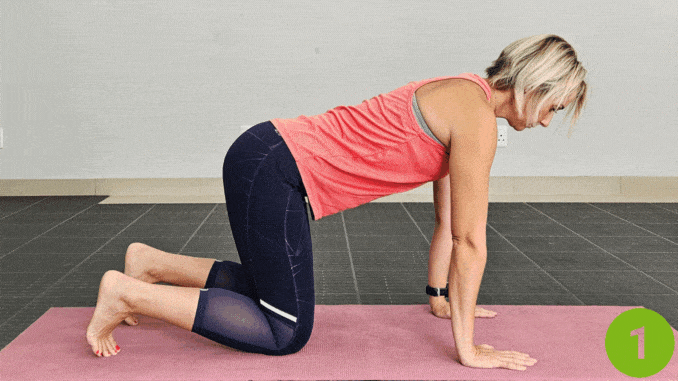
- Begin in a 4-point position with your hands directly under your shoulders and your knees under your hips.
- Engage your core.
- Keeping your right knee bent at 90 degrees, slowly lift your leg upward toward the ceiling until your thigh is parallel to the floor.
- Squeeze your glutes at the top of the movement.
- Lower your leg back to the starting position in a controlled manner.
- Complete the movement for 3 sets of 10 repetitions on each side.
4. Side Leg Lift
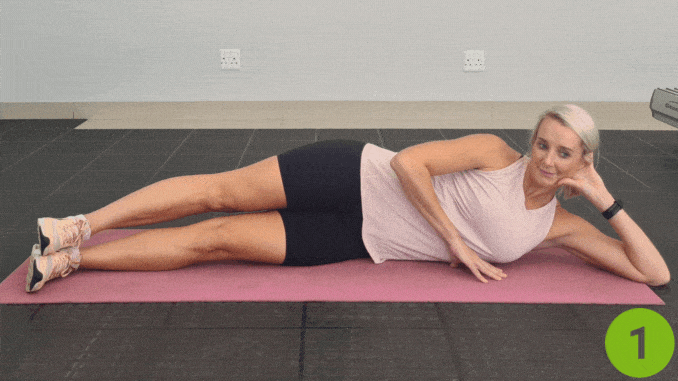
- To activate the glutes, start by lying on your side with your arm bent on the floor, supporting your upper body.
- Bend your knees slightly, keeping your ankles in line with your hips.
- Tighten your core.
- Lift your leg towards the ceiling.
- Lower your leg and repeat the movement on the opposite side.
5. Bodyweight Squat
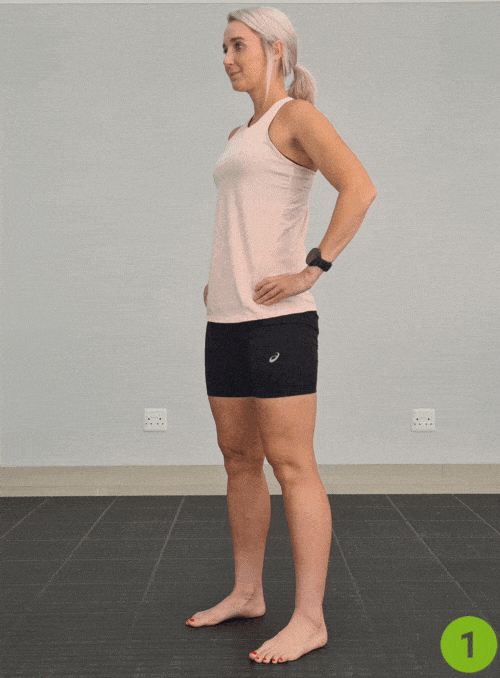
- Begin in an upright standing position with your feet hip-width apart and your toes pointing slightly outward.
- Engage your core, hinge from your hips, and bend your knees to lower your seat downward.
- Keep your knees behind your toes and avoid letting your knees fall inward.
- Hold this position for several deep belly breaths, breathe in through your nose and out through your mouth.
- Press from your heels to return to the starting position and repeat the movement.
6. Fire Hydrants
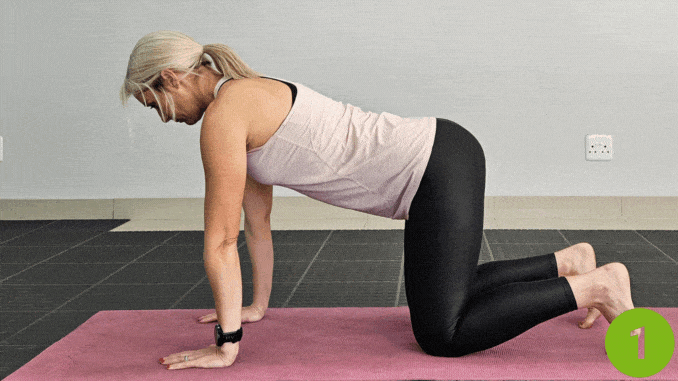
- Begin in a 4-point position with your hands under your shoulders and your knees underneath your hips.
- After that, engage your core and lift one knee out to the side, then trace a small circular motion in one direction.
- Lower your leg back to the starting position and repeat the movement in the opposite direction.
Causes of Glute & Hamstring Pain
- Muscle strain: Overstretching or overusing hamstrings and glutes.
- Electrolyte imbalance: Excessive loss of potassium or sodium through sweat can impair muscle function.
- Metabolic fatigue: Intense exercise causes a buildup of lactate and hydrogen ions, which creates that burning sensation.
- Delayed onset muscle soreness (DOMS): Microscopic muscle fiber damage after intense exercise.
- High hamstring tendinopathy (“runner’s butt”): Deep pain near the sit bone, often linked to overuse, tightness, or weak glutes.
How to Prevent Pain
When the glutes activate late, your hip may roll inward. That puts extra pressure on your kneecap and can either start or exacerbate pain.
So, here’s how to prevent it:
- Fuel smart: Eat carbs + protein before and after runs.
- Warm up: Engage in light cardio and dynamic stretches before exercise.
- Hydrate: Sip water regularly during runs, especially in hot weather
- Recover right: Stretch, foam roll, massage, eat recovery snacks, and use ice baths or cold showers.
- Wear proper shoes: Old shoes increase the risk of injury.
- Balance muscles: Strengthen both quads and hamstrings.
Conclusion
Glute activation [3] isn’t fancy—it’s quick and effective. A short warm-up that focuses on engaging your gluteus maximus and gluteus medius can enhance hip extension and improve overall lower-body mobility. Spend 5–10 minutes before workouts or runs doing controlled hip movements and controlled, mindful squeezes (without straining).
Aim for smooth reps, steady breathing, and light muscle tension—not fatigue. This simple prep increases stability, eases tightness, and lowers your risk of back, hip, knee, and hamstring pain.
That’s why Advanced Gluteus Maximus Exercises is here to help you power up your glutes, build strength, increase stability, and achieve that firm, toned look you’ve always wanted. Check out now!
Frequently Asked Questions
How do I know if my glutes are activated?
You’ll know your glutes are activated if the effort and burn stay in your glutes (the cheeks), not in your lower back or hamstrings.
Why is one of my glutes not activating?
One glute may not activate due to prolonged sitting, tight hip flexors, past injuries, or side dominance causing muscle imbalance.
How long does it take to activate the glutes?
- In-session: Feel better from day one with focused cues.
Consistent change: Do this mini routine 4–6 days/week; most people notice steadier control in 2–6 weeks.
Progress: For muscle growth, move on to heavier hip thrusts, split squats, and single-leg work.
Bottom line: Use simple glute exercises, a clean set-up (feet hip width, slight bend), a band for feedback, and stretch hip flexors. Stay consistent, focus on the squeeze, and train your glutes, not surrounding muscles, to do the work.


